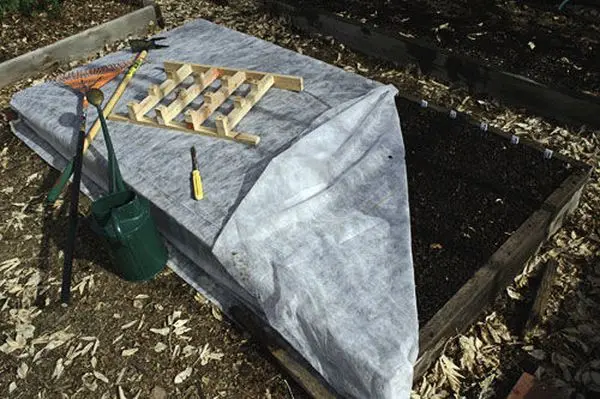Contents
The healing properties of garlic make it popular among gardeners. Many of them plant crops in the spring, but there are those who plant in the cold season. Therefore, the question of how to cover garlic for the winter is becoming more and more relevant.
Why garlic is planted before winter
Garlic has a lot of useful substances. In addition to the well-known ability to increase immunity, it has a beneficial effect on the gastrointestinal tract, cardiovascular system, liver, and even mental abilities.

Planting garlic in the fall has several benefits:
- Early shoots. Autumn planting, unlike the traditional spring planting, will provide the gardener with an early harvest. And this, in turn, will free up and prepare beds for other crops.
- Winter garlic undergoes a kind of hardening, after which it becomes stronger and more resistant to environmental factors. The vegetable easily adapts to changes in temperature and humidity levels.
- Sowing in the cold season protects the vegetable from pests.
- The fruits of winter garlic, as a rule, are large, and the division into cloves is uniform.
Video “Why you need to cover garlic for the winter”
In this video, a specialist will tell you why to cover onions and garlic for the winter.
Do I need to cover the beds
Despite the resistance of the culture, frost, snow and fluctuations in the temperature column negatively affect fragile seedlings. They weaken and become more susceptible to decay and pests. Experienced gardeners know that in order for the garlic crop to be generous and of high quality, the crop must be insulated for the winter. There are a number of explanations for this:
- During the thaw period, when the weather is unstable, the first shoots may appear, which will die from subsequent frosts. Properly prepared shelter will prevent freezing of the earth.
- The shelter will protect the seedlings from snow, and at the same time from waterlogging of the soil.
- Organic insulation materials can speed up the process of sprouts.
- Shelter reliably protects the crop from garden pests and fungal diseases.

The decisive factor in the question of whether it is necessary to cover garlic for the winter is the climatic features of the region. If we are talking about the Moscow region, where winters are mild, there is no particular need to cover the culture. As for Primorye, with dry and cold winters, one cannot do without additional shelter.
What materials to use for shelter
In autumn, before planting garlic, you need to mulch the soil. For this, a mixture of sand and ash is prepared. When the cold weather is finally established, you can start warming. The choice of material should be based on the climatic features of the area.
There are several options for insulation:
- Agrofibre. It is a thin film made of polypropylene. The material is used in regions with relatively warm winters. It retains heat well and transmits sunlight. In addition, agrofibre prevents the accumulation of excess moisture in the soil. With proper handling, the material is enough for 3-4 seasons.
- Peat. Used in regions with cold winters. The soil mulched with peat retains heat and moisture for a long time. The disadvantage of the material is that in the event of rain, the peat oxidizes, which leads to a strong compaction of the soil.
- Sheet. The most affordable insulation is fallen leaves. It has high breathability, which will prevent rotting of the teeth. But there are also significant drawbacks. Firstly, insects live in dry leaves, which can damage the planted garlic. Secondly, the foliage that survived the frost turns into a solid crust that does not let air through. Thus, excess moisture accumulates under the material, which provokes the process of decay.
- Sawdust. This is the most versatile option for ground mulching. Sawdust perfectly retain heat in the soil and absorb excess moisture. But after getting wet, the material becomes unsuitable for shelter, as it prevents the soil from warming up and impedes air circulation.
- Hay. The advantages of this option include good thermal insulation. Hay retains snow, which prevents excess liquid from seeping into the soil. However, after wetting, the hay is strongly compacted, and this leads to the gradual decay of the soil under it.
To prepare the crop for winter, you need to mulch the soil, cover it with a small layer of peat, cover it with protective material, and then with dry foliage. Under such shelter, young sprouts are not afraid of frost and high humidity.
An experienced gardener knows that in order for garlic to bring a generous harvest, you need to take care of its wintering. Depending on the climate of your region, you should prepare a shelter that will not only protect the seedlings from the negative effects of the environment, but will also be breathable. Subject to all the norms of warming, garlic will safely overwinter and bring high-quality fruits.
Author: Svetlana Golitsina
Loading…









